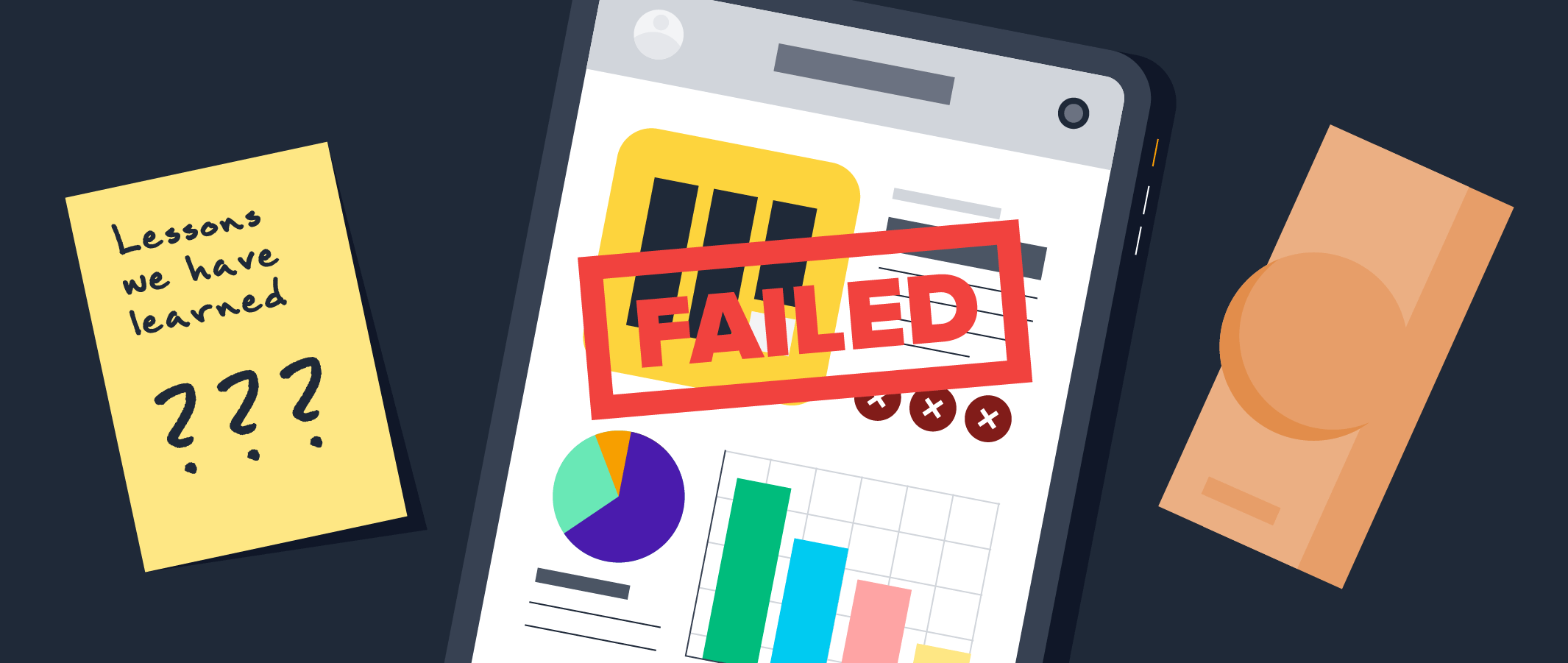Hello!
 Preparing to develop an app is an exciting time for any business. It’s important to note that many apps, regardless of quality, have failed to affect the app market, and for good reason.
Preparing to develop an app is an exciting time for any business. It’s important to note that many apps, regardless of quality, have failed to affect the app market, and for good reason.
To keep the same from happening to you, you need to be aware of some common pitfalls you could face.
Therefore, in this post, we’ll be talking about the most common reasons why mobile apps fail.
Lack of an App Monetization Strategy
You’d be surprised how many apps fail because their developers don’t have a monetization strategy in place.
A monetization strategy is one of the essential parts of an app project.
 It explains how an app is to generate revenue and make the project profitable for the company that developed it.
It explains how an app is to generate revenue and make the project profitable for the company that developed it.
Without one, you’re leaving your app-driven revenue to chance, thus risking the project to flop.
A great app monetization strategy allows you to ensure sustainable growth for your project.
Thanks to the right strategy, you can create target goals and objectives for your app, helping you avoid failure.
To set your app for success, make sure to create a long-term monetization plan.
Thankfully, there’s plenty of ways an app can make some serious money for its developers.
These are the most common monetization strategies for apps:
- A free app with advertisement revenue
- A free app with a paid subscription model
- A free app with in-app purchases
- A paid, function-specific app
You should focus on a strategy based on the specifics of your app.
The difference between a failed and a successful app often lies in the quality of its monetization strategy.
Underestimating the Development Costs
As many businesses have unfortunately found out, developing a high-quality app is an expensive affair.
Failure to accurately calculate app development costs is one of the most common reasons a mobile app project fails.
 Since developing an app has plenty of room for error, there are countless ways the project can be delayed, which adds to the pile of costs.
Since developing an app has plenty of room for error, there are countless ways the project can be delayed, which adds to the pile of costs.
You can quickly end up blowing your budget before you even launch the app if you miscalculate how much the project will cost.
You can’t afford to overlook the hidden costs of app development.
Hidden costs go beyond the things you included in the budget and always come as a negative surprise, which forces development teams to stretch and relocate resources.
They usually appear later during development, crippling the launch and post-launch phase.
To get a better understanding of app development costs, let’s talk about numbers.
 According to a study by Clutch, the average minimum price of app development varies from $5000 to $10000.
According to a study by Clutch, the average minimum price of app development varies from $5000 to $10000.
The cost can easily go up if development time gets delayed or the project is temporarily halted for whatever reason.
If you don’t get a grip on app development’s total costs, you can easily blow your budget and end up creating a lesser app that will fail to make an impact.
No Strategy for App Maintenance
After you’ve launched your app, you have to maintain and update it regularly.
Since technology changes all the time, app maintenance is crucial for keeping your app functional so that users won’t drop it after a couple of months.
Remember that the app market is merciless and competitive, so if your app isn’t up to date, users will download a newer, fresher one from someone else.
 Your app will fail if it doesn’t adhere to the most cutting-edge trends and features of app design.
Your app will fail if it doesn’t adhere to the most cutting-edge trends and features of app design.
Neglecting to meet those expectations will cause users to uninstall your outdated product.
According to research by AppsFlyer in 2020, the worldwide uninstall rate for apps after 30 days has peaked at 56%.
App users are very demanding and have high expectations of their apps.
If apps fail to deliver a flawless experience, they will get uninstalled soon after launch.
Creating a maintenance strategy for your app is necessary to keep it in top-performing order.
A Flawed Marketing Plan
 A flawed or poorly written marketing plan is the downfall of many promising mobile apps.
A flawed or poorly written marketing plan is the downfall of many promising mobile apps.
A flawed marketing plan is responsible for your app getting lost in the sea of new products.
Since app stores are some of the most competitive markets out there, a marketing plan that fails to differentiate your app from other similar ones spells disaster for your entire project.
If you don’t cover all the ways to promote it effectively, your mobile app will fail.
Keeping up with the trends when it comes to your marketing efforts is crucial for keeping your users engaged.
App users are easily distracted and will quickly uninstall apps once they disengage.
A poorly written plan will fail to consider that and leave out a strategy for re-engaging lapsed app users.
To avoid app failure, make sure you create a bulletproof app marketing plan that sparks engagement.
If you think your app doesn’t require tremendous marketing efforts, think again.
 According to Statista, on average, 100 000 new apps are uploaded on the Android app store every month.
According to Statista, on average, 100 000 new apps are uploaded on the Android app store every month.
That means that, within six months of the release, there will be over half a million apps on top of yours in the app store.
Writing a flawed marketing plan that can’t engage app users or gain new ones will cause your app to fail, without a doubt.
Also read:
- Top Social Media Monitoring Vendors for Business
- Yet Another Tech Giant Throws Its Weight Behind Nuclear As AI's Monstrous Power Demands Spike
- How Furniture Visualization is Making Online Shopping Effortless
Conclusion
In this post, we’ve covered the most common reasons mobile apps fail.
For apps, quality alone is never enough to win over the market.
Before you rush to launch your mobile app, make sure you cover all the issues mentioned on this list.
Thank you!
Join us on social media!
See you!






